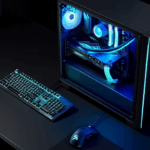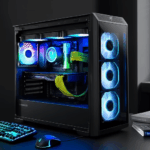“`html
Advanced Techniques in Computer Vision: What You Need to Know
Introduction
Computer vision is a rapidly evolving field that focuses on enabling machines to interpret and understand visual information from the world around them. This technology has found applications in numerous sectors, including healthcare, automotive, security, and entertainment. Advanced techniques in computer vision are crucial because they enhance the accuracy, efficiency, and versatility of these applications, leading to significant improvements in various industries.
The importance of advanced computer vision techniques cannot be overstated. They drive innovations in areas such as autonomous vehicles, facial recognition, medical diagnostics, and augmented reality. By leveraging sophisticated algorithms and powerful computational models, computer vision systems can now perform complex tasks that were once considered impossible.
Key Concepts in Computer Vision
To fully grasp the advancements in computer vision, it’s essential to understand some fundamental concepts:
- Image Processing: This involves manipulating digital images to improve their quality or extract useful information. Common operations include filtering, enhancement, and compression.
- Object Detection: This refers to identifying and locating objects within an image or video frame. It forms the basis for many practical applications, such as traffic monitoring and surveillance.
- Segmentation: This process divides an image into distinct regions based on specific criteria, allowing for more granular analysis of individual components.
- Feature Extraction: This technique identifies unique characteristics within images that can be used to distinguish between different objects or scenes.
These concepts work synergistically to enable advanced computer vision applications. For example, combining image processing with object detection allows for real-time tracking of moving targets, while feature extraction enhances the precision of classification tasks.
Deep Learning and Neural Networks
Deep learning has revolutionized the field of computer vision by introducing convolutional neural networks (CNNs), which excel at recognizing patterns within large datasets. CNNs consist of multiple layers designed to automatically learn hierarchical representations of input data, making them highly effective for image recognition tasks.
In addition to CNNs, other types of neural networks play important roles in computer vision:
- Recurrent Neural Networks (RNNs): These networks are particularly useful for sequential data, such as time-series analysis or video processing.
- Transformers: Originally developed for natural language processing, transformers have also shown promise in improving spatial relationships between features in images.
By leveraging these architectures, researchers continue to push the boundaries of what’s possible in computer vision, enabling more accurate and efficient solutions.
Object Detection and Recognition
Several prominent algorithms dominate the landscape of object detection:
- Faster R-CNN: Known for its balance between speed and accuracy, Faster R-CNN uses region proposal networks to efficiently identify potential object locations before applying a classifier.
- You Only Look Once (YOLO): YOLO divides the image into grids and predicts bounding boxes directly, achieving impressive speeds without sacrificing too much precision.
- Single Shot MultiBox Detector (SSD): SSD combines localization and classification into a single network, streamlining the detection process.
Recent advancements have focused on improving both accuracy and real-time performance. For instance, models like EfficientDet leverage compound scaling strategies to optimize trade-offs between computation cost and prediction quality.
Image Segmentation
Image segmentation involves partitioning an image into meaningful parts, distinguishing between background and foreground elements. Two primary types exist:
- Semantic Segmentation: Assigns labels to each pixel based on category membership, useful for tasks like scene understanding.
- Instance Segmentation: Identifies individual instances of objects within an image, critical for applications requiring precise object delineation.
Popular segmentation models include:
- U-Net: A widely adopted architecture for biomedical image segmentation due to its ability to preserve fine details.
- Mask R-CNN: An extension of Faster R-CNN that adds a branch for predicting object masks, enhancing instance segmentation capabilities.
- DeepLab: Utilizes atrous convolutions to capture long-range dependencies, improving segmentation accuracy.
Applications range from medical imaging, where accurate tissue boundaries are vital, to autonomous driving, where identifying pedestrians and obstacles ensures safety.
3D Vision and Point Cloud Processing
3D vision extends traditional 2D approaches by incorporating depth information, offering richer context for understanding environments. Point clouds represent three-dimensional spaces as collections of points, capturing surface geometry.
Key aspects of 3D vision include:
- Depth Estimation: Inferring distances between objects and camera positions.
- Point Cloud Registration: Aligning multiple scans to create consistent representations.
- Surface Reconstruction: Generating smooth surfaces from raw point data.
Tools and frameworks like Open3D, PCL (Point Cloud Library), and TensorFlow support these processes, facilitating development across domains like robotics and virtual/augmented reality.
Challenges and Future Directions
Despite remarkable progress, several challenges remain:
- Robustness Against Adversarial Attacks: Ensuring models resist malicious inputs aimed at deceiving outputs.
- Generalization Across Diverse Datasets: Training models capable of performing well under varying conditions.
Future developments may include:
- Explainable AI: Providing transparency into model decisions for better trustworthiness.
- Multimodal Learning: Integrating complementary sensory inputs (e.g., audio, touch) for enhanced perception.
- Edge Computing: Enabling real-time processing on resource-constrained devices.
Conclusion
This article has explored various advanced techniques in computer vision, highlighting their significance and potential impact. From deep learning architectures to cutting-edge segmentation models, ongoing research continues to expand the horizons of this dynamic field.
As technology evolves, staying informed about new discoveries and methodologies remains crucial. Encouraging curiosity and fostering collaboration will undoubtedly propel computer vision forward, unlocking even greater possibilities.
“`


